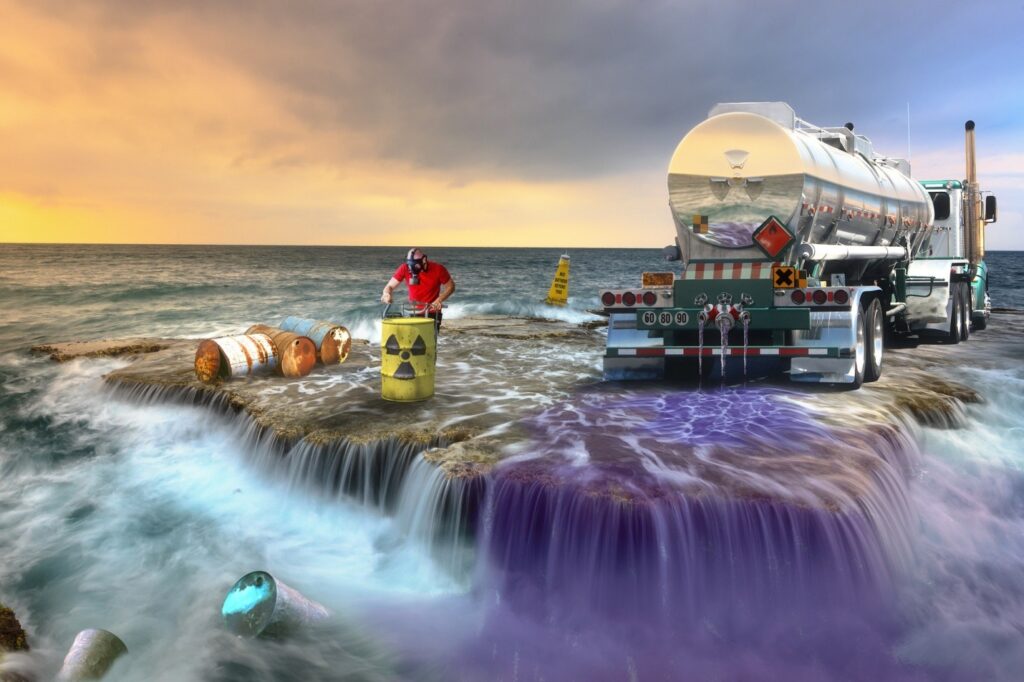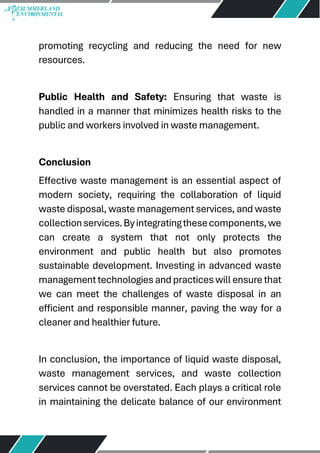The Best Guide To Reclaim Waste
The Best Guide To Reclaim Waste
Blog Article
The Buzz on Reclaim Waste
Table of Contents5 Easy Facts About Reclaim Waste Explained5 Easy Facts About Reclaim Waste ShownThe 8-Second Trick For Reclaim WasteWhat Does Reclaim Waste Mean?How Reclaim Waste can Save You Time, Stress, and Money.
Residential sewage waste refers to the waste and products from a household septic storage tank. The proper monitoring and disposal of residential sewer waste require liquid waste to be transferred to a sewer therapy plant where the proper methods and equipment are applied to cleanse and dispose of waste.
Business waste frequently includes potential threats, such as flammable materials or a mixture of liquid and solid waste products, and calls for an advanced and comprehensive disposal process. The disposal of industrial waste typically involves the filtration of waste prior to transportation to ensure risk-free and proper disposal. Industrial waste is produced from results and runoff of commercial processes and manufacturing.
This type of waste can not utilize the exact same sewer monitoring transport or procedures as septic or business fluids. The industrial waste administration procedure needs the evaluation and testing of liquid waste prior to it goes through the disposal process (liquid waste disposal). Drainage waste is the fluid waste that comes from drainage and excess stormwater in extremely populated locations or cities
Drainage waste can create contamination and flooding if not taken care of effectively. Guaranteeing appropriate waste administration can avoid calamities and decrease environmental injury.
Reclaim Waste for Beginners
Contact PROS Providers today to discover our waste administration and disposal solutions and the correct means to take care of the liquid waste you create.
(https://forums.hostsearch.com/member.php?271151-reclaimwaste1)This supposed 'wastewater' is not only an important source yet, after therapy, will be launched to our land, waterways or the ocean. Utilized water from toilets, showers, bathrooms, kitchen sinks, washings and industrial procedures is understood as wastewater.

water made use of to cool down machinery or tidy plant and devices). Stormwater, a type of wastewater, is overflow that moves from farming and city locations such as roofings, parks, yards, roadways, paths and rain gutters right into stormwater drains pipes, after rain. Stormwater flows neglected directly to neighborhood creeks or rivers, at some point getting to the sea.
The Main Principles Of Reclaim Waste
In Queensland, most wastewater is dealt with more helpful hints at sewage treatment plants. Wastewater is transferred from domestic or industrial sites through a system of sewage systems and pump terminals, recognized as sewage reticulation, to a sewer treatment plant. City governments construct, preserve and operate most sewage treatment plants. Operators are accredited under the Environmental Protection Act 1994 to discharge treated wastewater at an acceptable ecological requirement into rivers.
The Department of Natural Resources suggests city governments regarding handling, operating and keeping sewage systems and therapy plants. In unsewered areas, regional governments might need owners to set up private or home sewer treatment systems to treat domestic wastewater from toilets, kitchens, restrooms and laundries. The Division of Natural Resources authorises making use of household systems when they are shown to be efficient.
In some brand-new communities, treatment of some stormwater to remove clutter, sand and crushed rock has actually started utilizing gross toxin catches. Wastewater therapy occurs in four stages: Removes strong matter.
Wastewater after that moves right into large storage tanks where solids work out and are removed as sludge. Oil and residue are skimmed from the surface area. Utilizes little living organisms referred to as micro-organisms to break down and remove staying dissolved wastes and fine fragments. Micro-organisms and wastes are included in the sludge. Eliminates nitrogen and phosphorus nutrients that might trigger algal blooms in our rivers and threaten aquatic life.
Things about Reclaim Waste
Nutrient elimination is not readily available at all sewer therapy plants due to the fact that it needs expensive specialized devices. It is becoming more common in Queensland. Clear liquid effluent produced after treatment may still contain disease-causing micro-organisms. If this effluent is launched into rivers such as rivers or the sea, the micro-organisms will at some point die out.

This typically suggests wastewater has to be treated or impurities gotten rid of before it can be released to waterways. A lot of wastewater moves right into the sewerage system. Under the Act, regional governments provide approvals and permits for eco relevant tasks (Ages) including wastewater launches that could have a neighborhood impact. The division carries out authorizations and licences to ERAs involving wastewater releases that may have a regional or statewide influence.
The smart Trick of Reclaim Waste That Nobody is Discussing
Monitoring offers valid details concerning water top quality and can validate that licence conditions are being fulfilled. The details acquired through tracking provides the basis for making water top quality choices.
Report this page